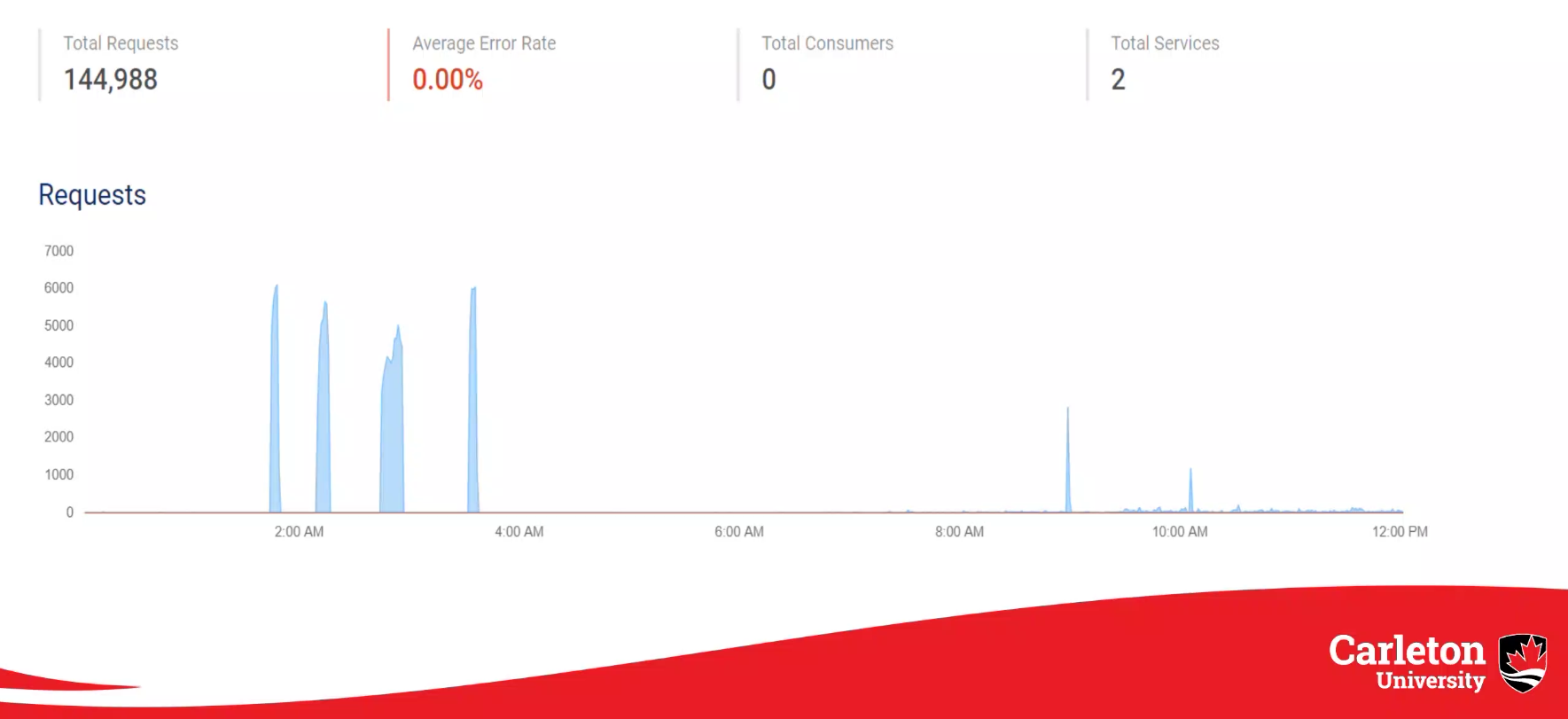Carleton University’s API Store celebrated its first anniversary in Fall 2022 and, since its debut, it has become integral in making applications and services more interoperable for software developers in our community.
An API, short for application programming interface, is a software intermediary that allows two applications to communicate with each other, and Carleton’s API Store is a one-stop portal for accessing these APIs. Used together, Carleton’s APIs and the API Store provide a wealth of enterprise data that can be used to automate services and streamline application development.
The API Store was built with security in mind. Prior to its launch, Carleton’s Information Security team conducted a thorough internal assessment of the API Store. It also underwent an external assessment through Red Canari to mitigate any overlooked vulnerabilities.
“With the trust and support of the Carleton community, the API Store is quickly becoming the standard for retrieving information from Carleton systems and databases,” says Joseph Nelson, Acting Director of Enterprise Applications.
API-driven applications currently being used at Carleton include cuScreen, the Ventus academic accommodations portal, the Brightspace learning management system, the Public Exam Calendar, the Raven Design System, the Employee Intake Form, and the Campaign Monitor email marketing platform.
The API Store receives on average 250,000 API calls per day, and since it was first launched in Fall 2021, it has received nearly 100 million API calls in total.

API usage during a sample 12-hour period.
The API Store would not be the success it is without the cross-collaborative efforts of many different departments and units across campus. The Software Development Team, the Windows and Unix teams, the database administrators’ group, Procurement Services, and Students and Enrolment continue to play important roles in the API Store and the services it connects with. The API Store is continuously being updated and improved and, if the past year is any indication, API usage at Carleton will continue to grow in the coming years.
This story is a part of ITS’s Year in Review for 2022/23. Read more at our Year in Review homepage, or follow along on Twitter using the hashtag #ITSYearinReview. Thanks for reading!